The Black Hills are an evergreen-covered mountain range rising out of the plains in far western South Dakota. Black Elk Peak (formerly known as Harney Peak), at 7,242 feet, is the highest point in the state. We spent the day making the long trek to the summit.
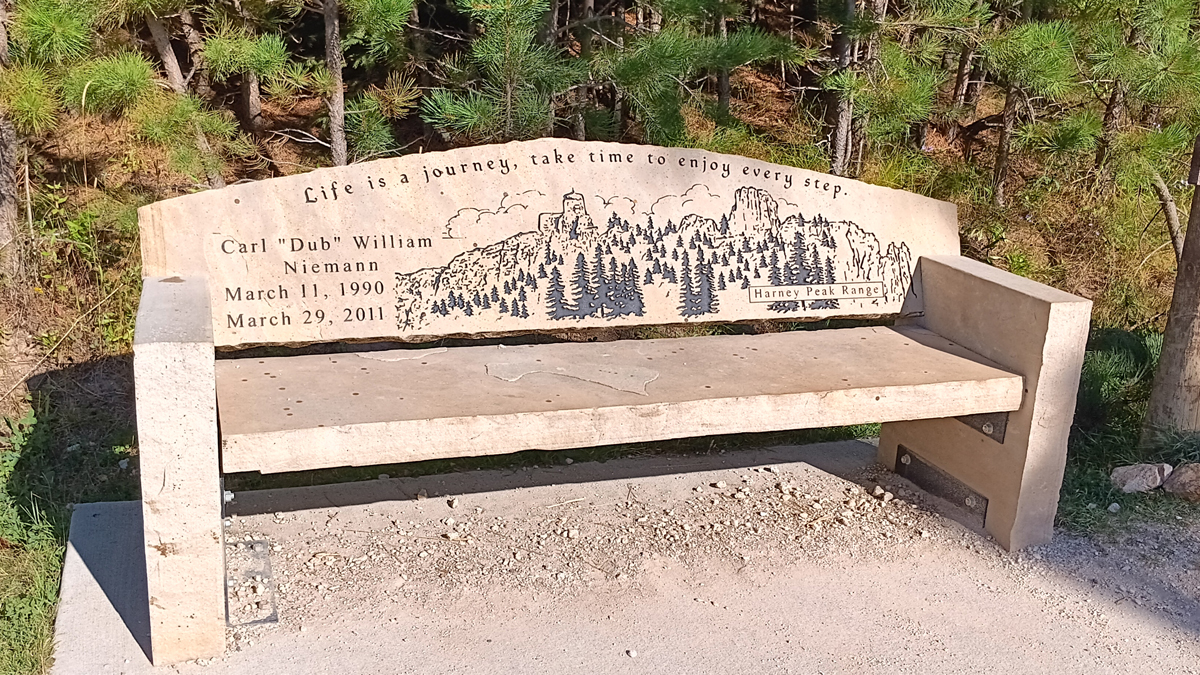
Plenty of steps to enjoy!
There are several trails to Black Elk Peak, and most of them start in Custer State Park. Custer is the oldest and largest state park in South Dakota and one of the largest state parks in the nation. It has scenic drives, great hiking, beautiful lakes, and tons of wildlife. If it wasn't so out of the way, everyone would be here.
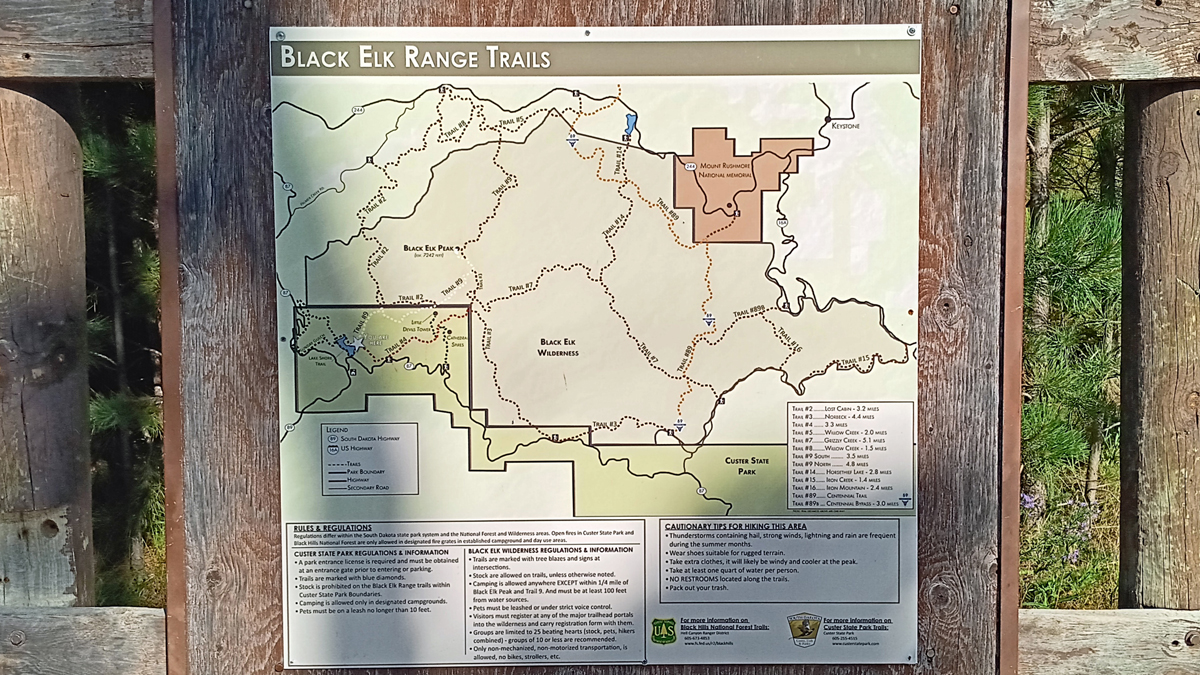
Black Elk Range trail map
The most popular route to Black Elk Peak is via Trail #9, a seven-mile out-and-back hike with an 1,100-foot elevation gain. But we decided to hike the entire Black Elk Loop, which begins with ascending Trail #9 from Sylvan Lake to the peak, then descending along the steeper and shorter Trail #4, with add-on spur trails to Cathedral Spires and Little Devil's Tower, and finally returning to Sylvan Lake via a connector trail – an ambitious 10 miles in all. That is a LOT for us.
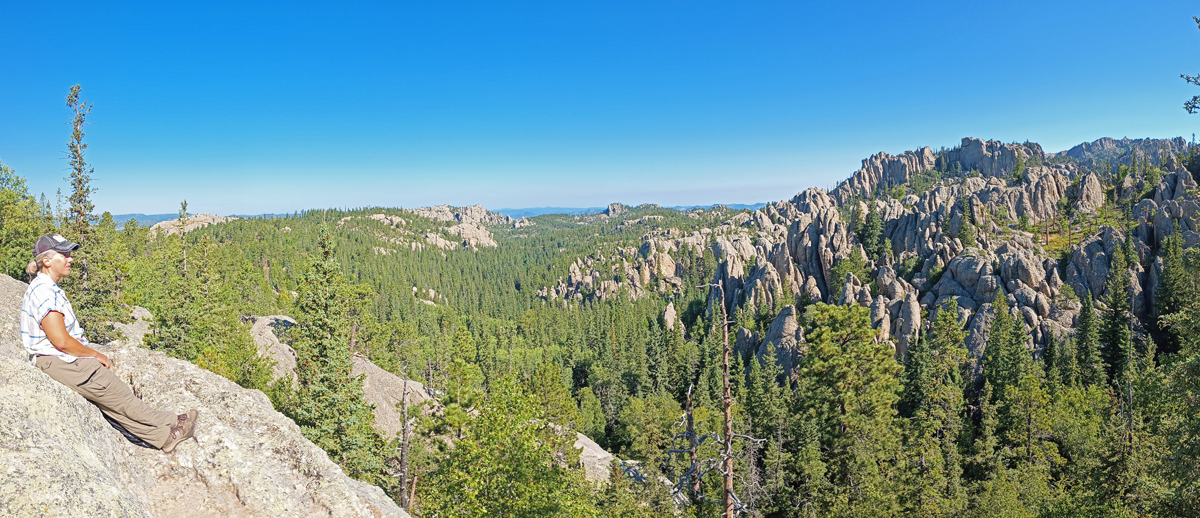
Jana enjoys the Black Hills
The lowest point of the trail, at Sylvan Lake, is over a mile high, but after several days in the high plains, we were reasonably acclimated to the elevation. Trail #9 starts off fairly flat, then it rises moderately before reaching the last punishing mile, which eventually culminates in a long, steep staircase to the top. Beautiful views of meadows, pine forest, and the granite peaks of the Needles kept us distracted while we made our ascent.
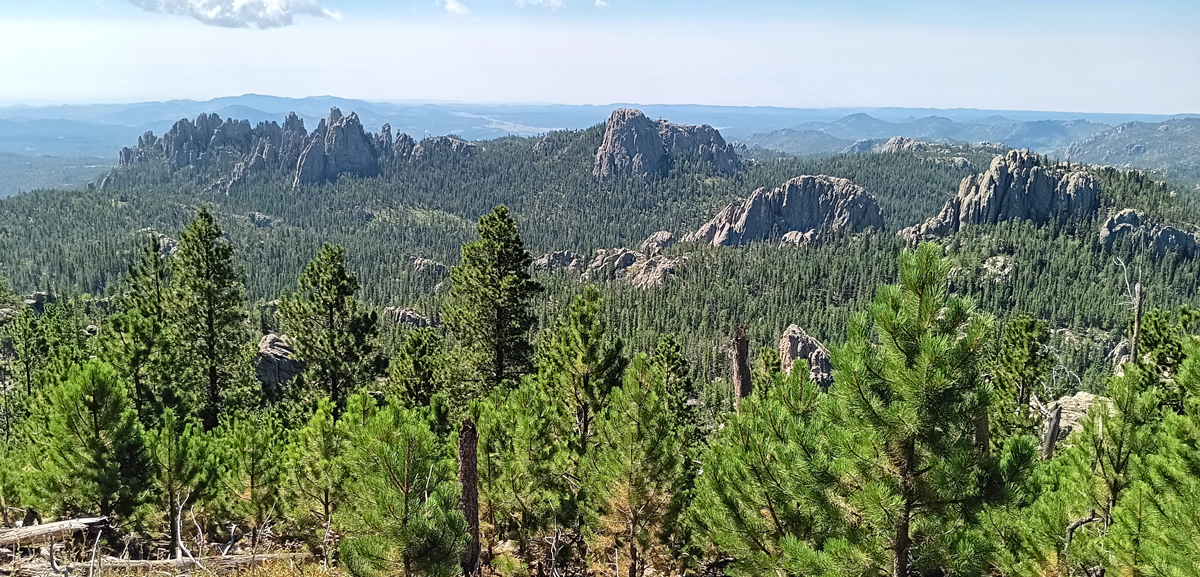
View from Trail #9
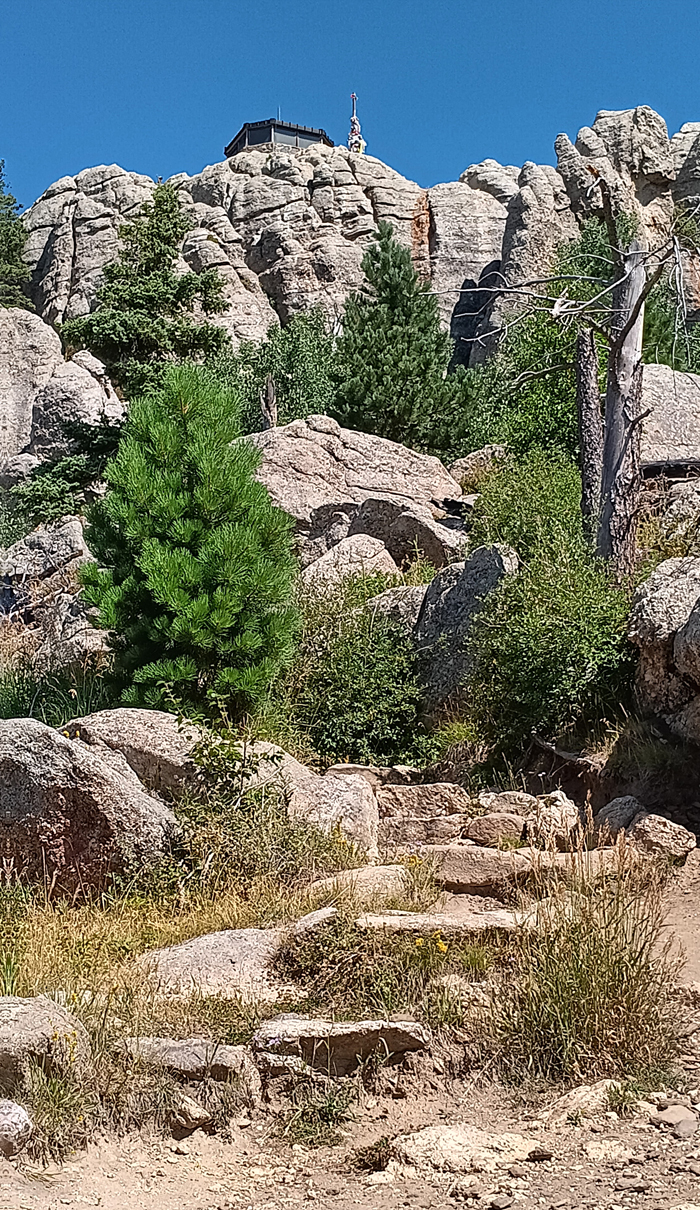
We can see the top!
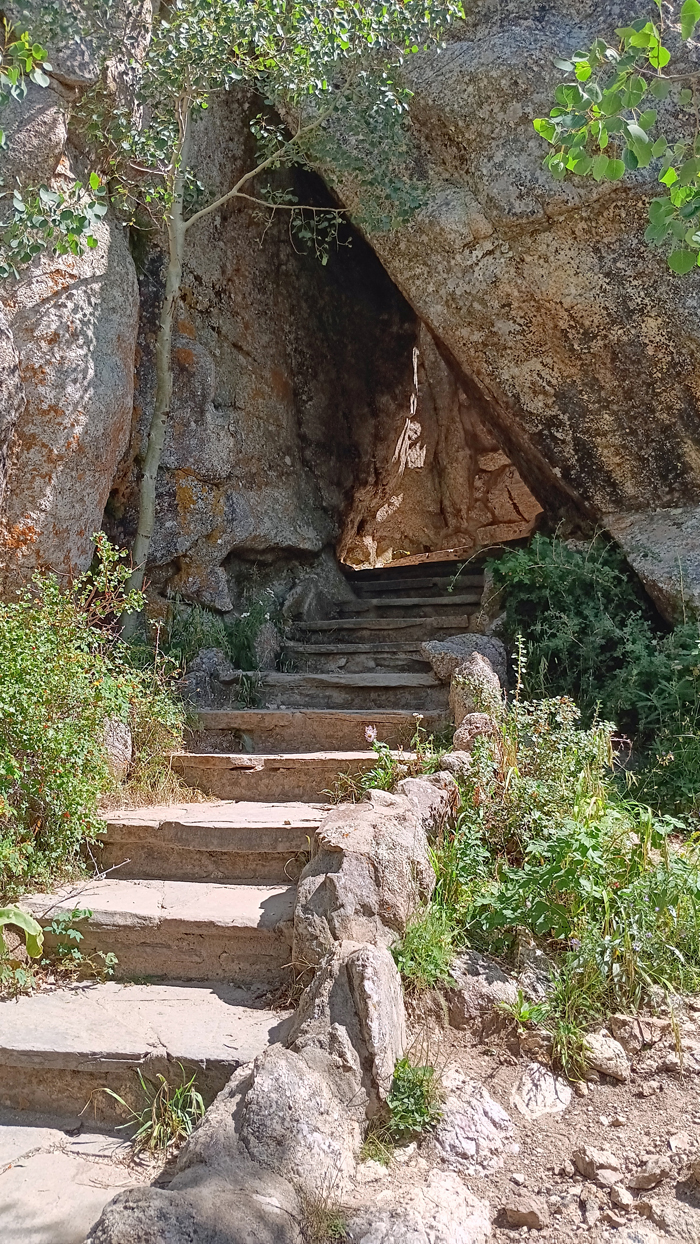
It's getting steeper...
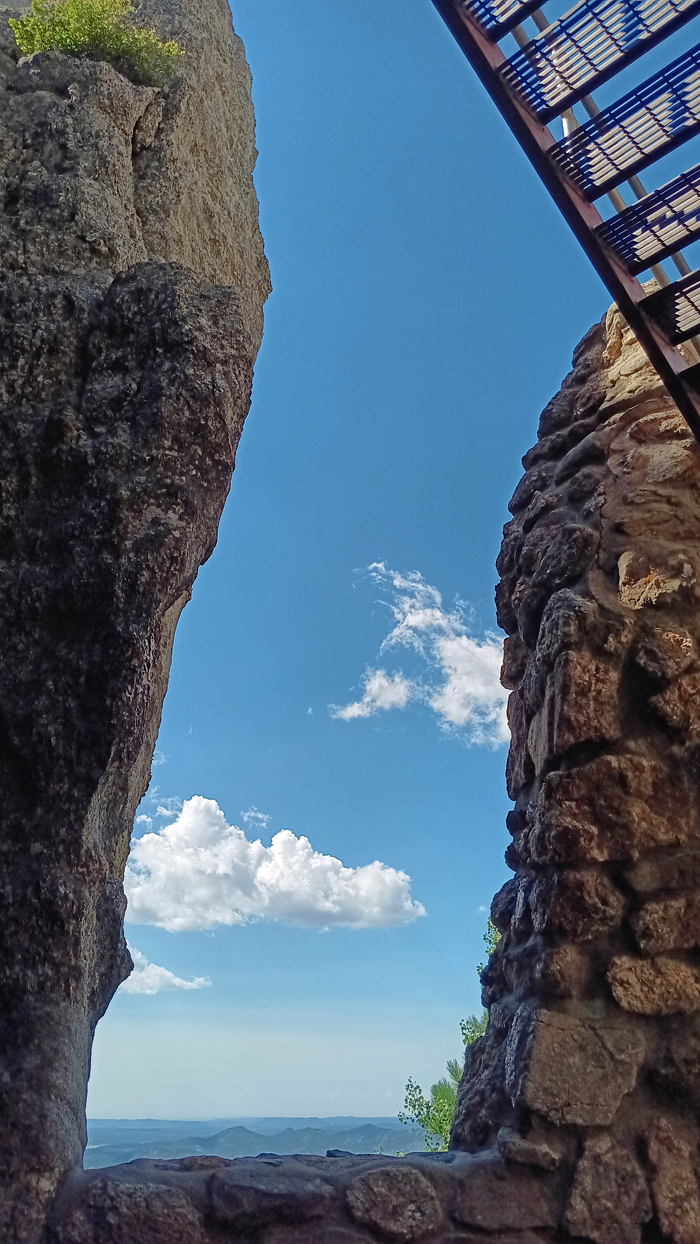
...and steeper
At the summit of Black Elk Peak is the Harney Peak Fire Lookout, a stone tower built by the Civilian Conservation Corps in 1938. Decommissioned as a fire lookout in 1967, the tower is now enjoyed by hikers. What a view! The colorful cloths tied around poles and trees are Native American prayer ties, meant as offerings to The Great Spirit.
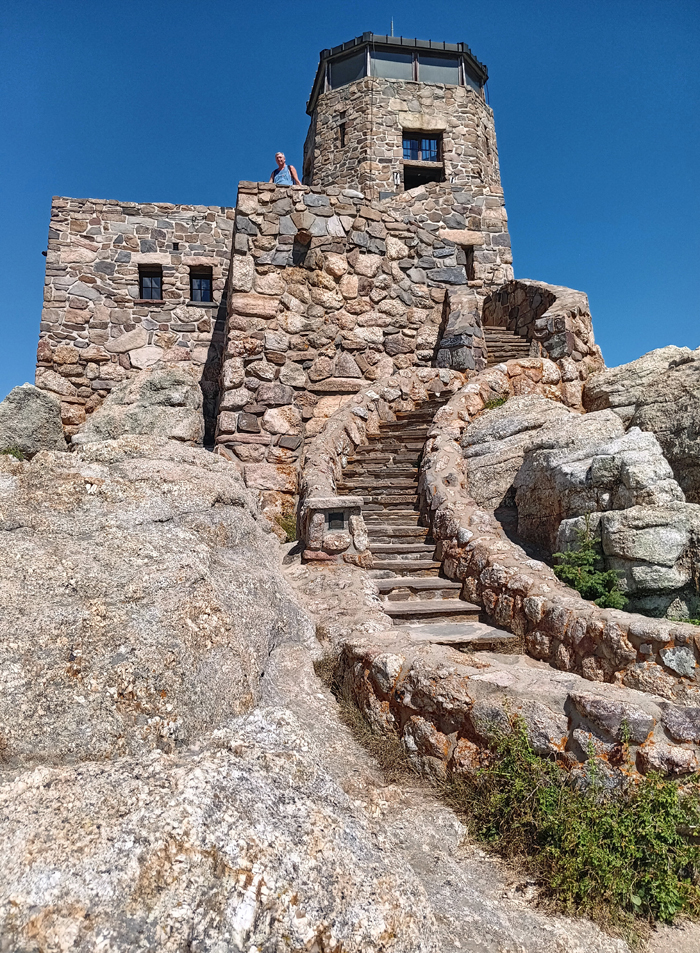
Tom looks down from Harney Tower
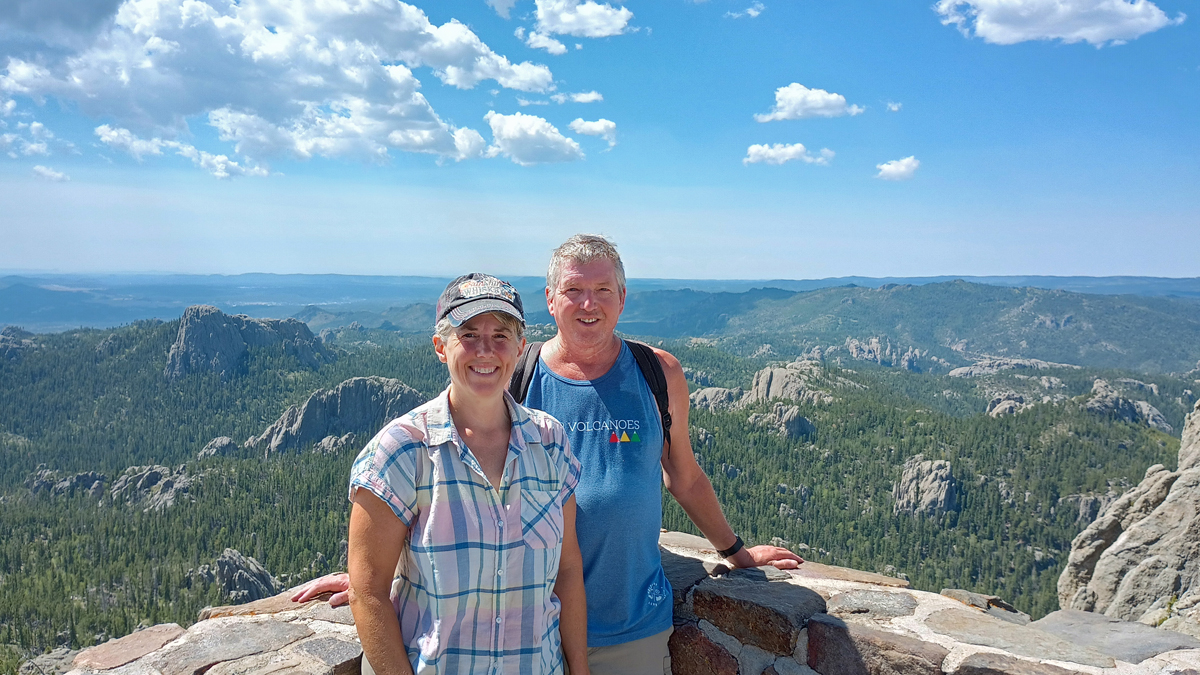
Jana and Tom on Black Elk Peak
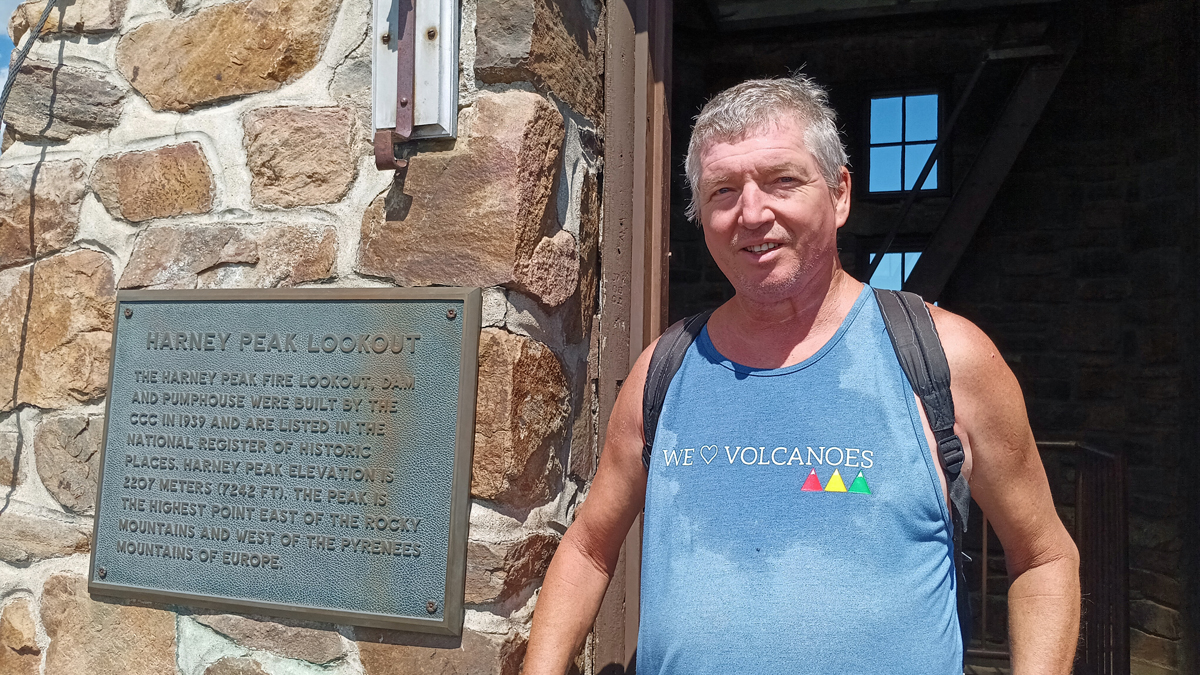
Highest point in South Dakota, 7,242 feet
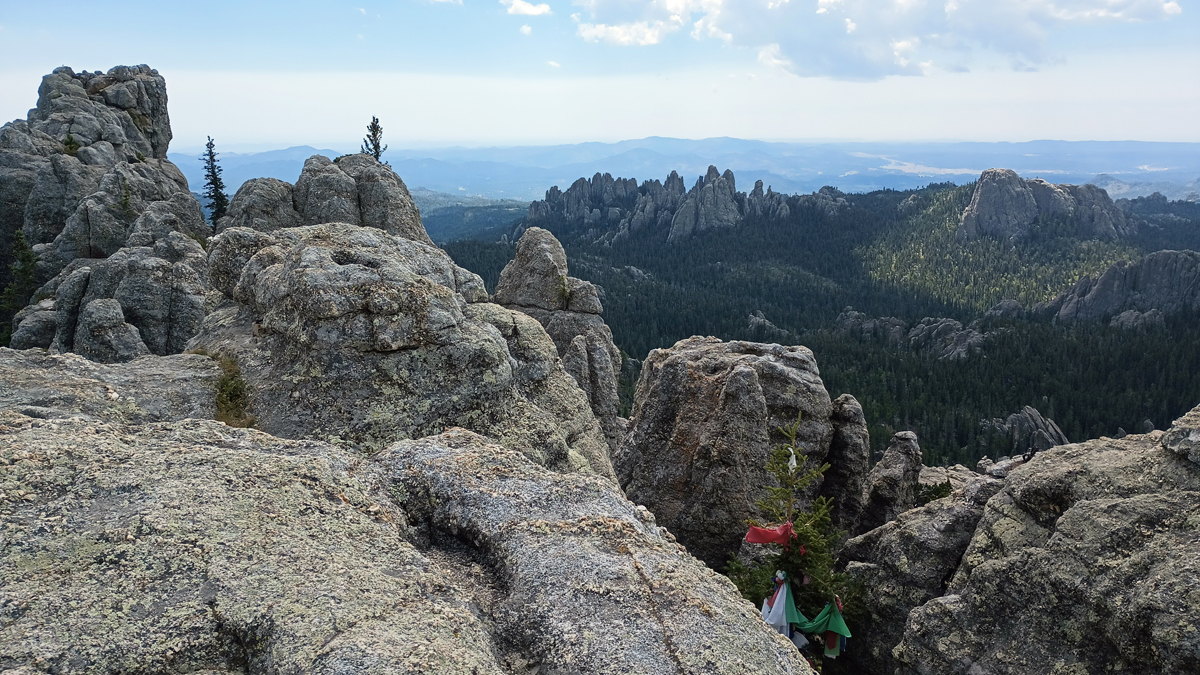
What a view!
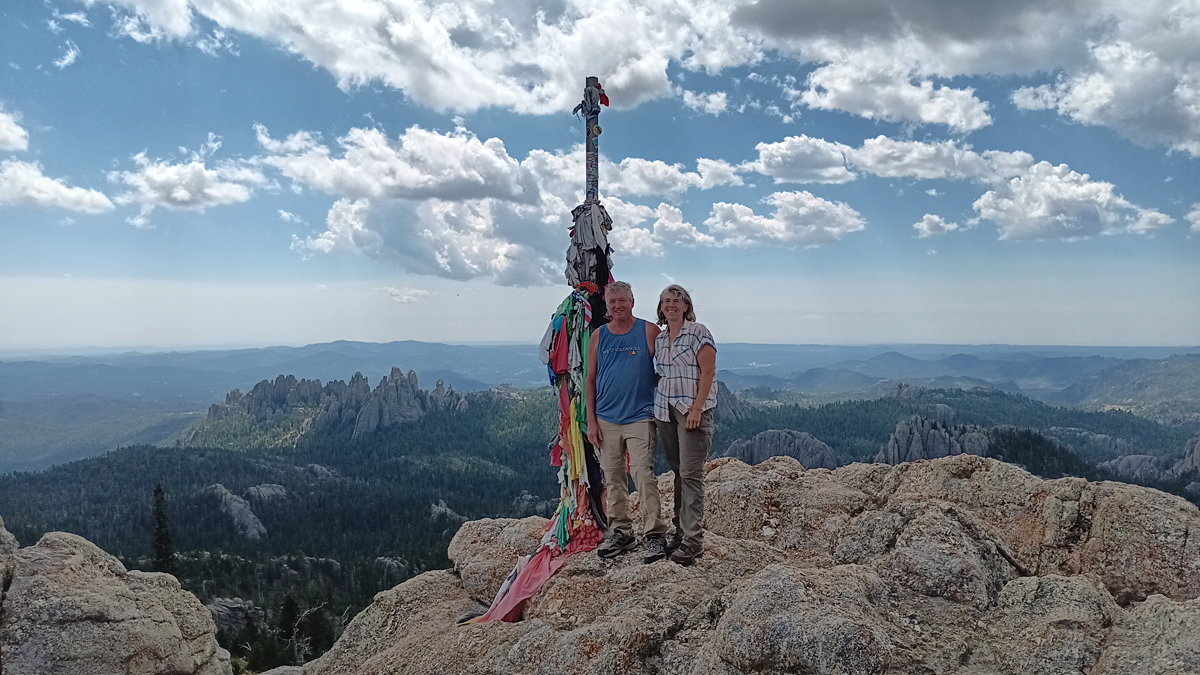
Tom and Jana on top of the world
Black Elk Peak was our 29th state high point and the last high point of this trip – Big Finish! We spent about an hour exploring the rocky cliffs at the top, searching for the US Geodedic survey marker, and enjoying the 360-degree views. What a great payoff for the hike so far, but we weren't even halfway through our loop!
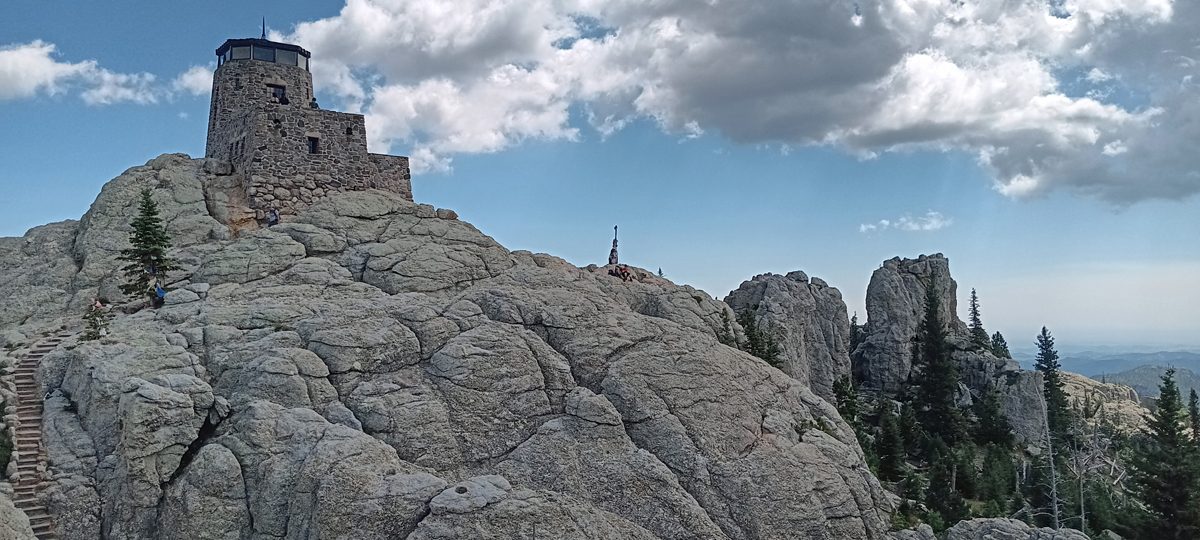
Black Elk Peak, formerly known as Harney Peak
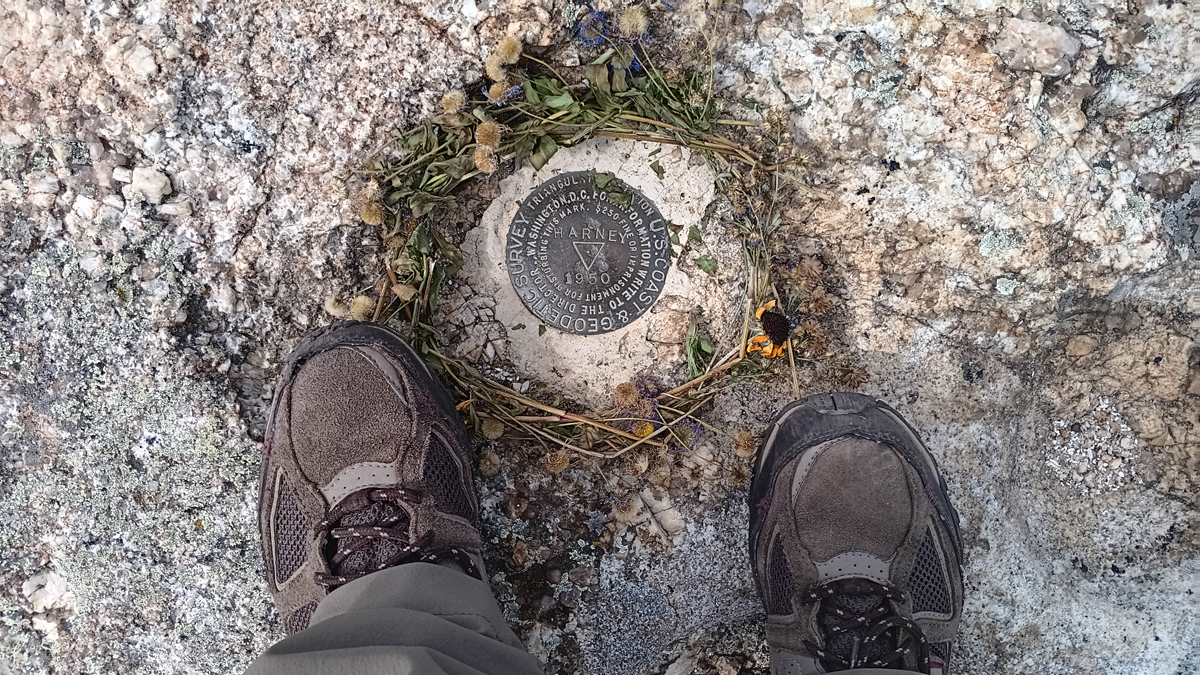
Finally found the benchmark!
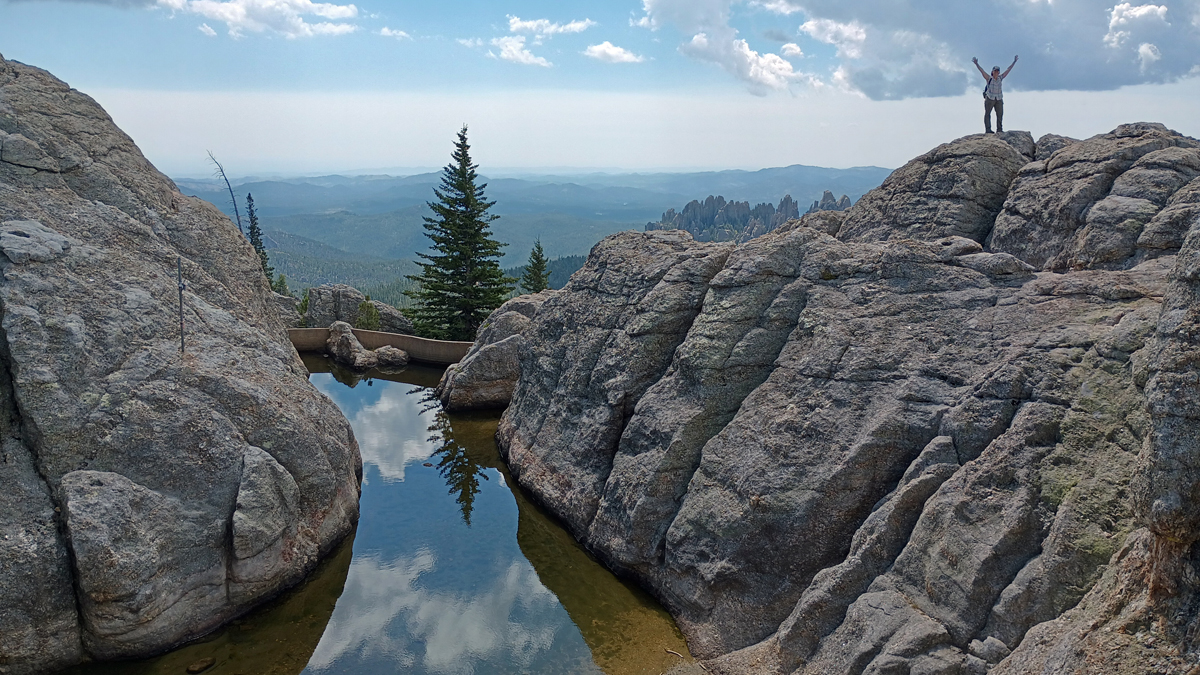
Jana celebrates summiting
We descended from the peak via Trail #4, a much-less-traveled trail than Trail #9. Trail #4 was steeper and narrower but just as scenic. Mainly, we chose to hike the loop so we could check out a couple of side trails, to Cathedral Spires and Little Devil's Tower.
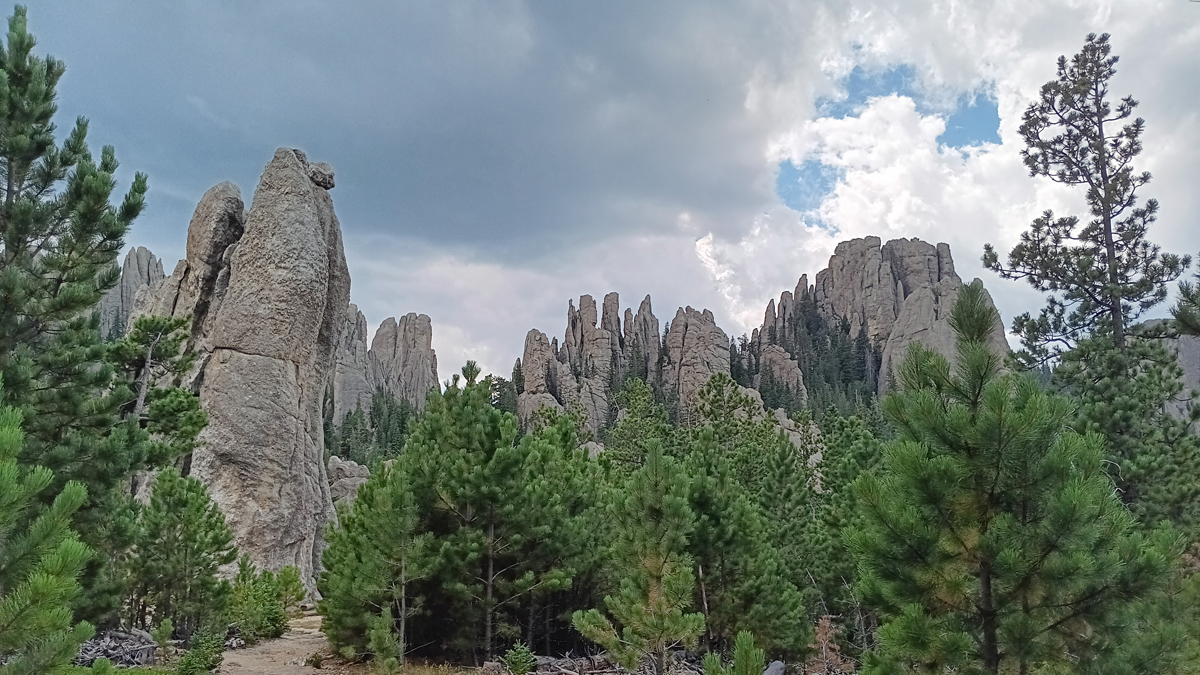
Cathedral Spires from Trail #4
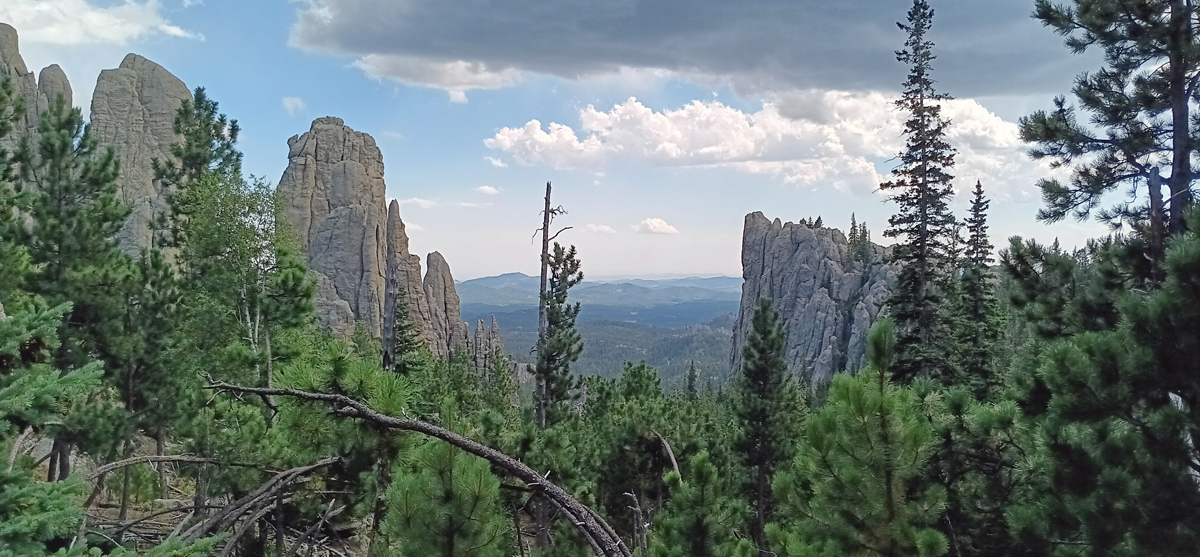
Another awesome view
The Cathedral Spires are part of the larger Needles area of Custer State Park. It added a few tenths of a mile to hike a portion of the Cathedral Spires Trail among the impressive granite formations. In retrospect, this wasn't really necessary, as the view of the spires was just as good from Trail #4 itself, but still, it was nice.
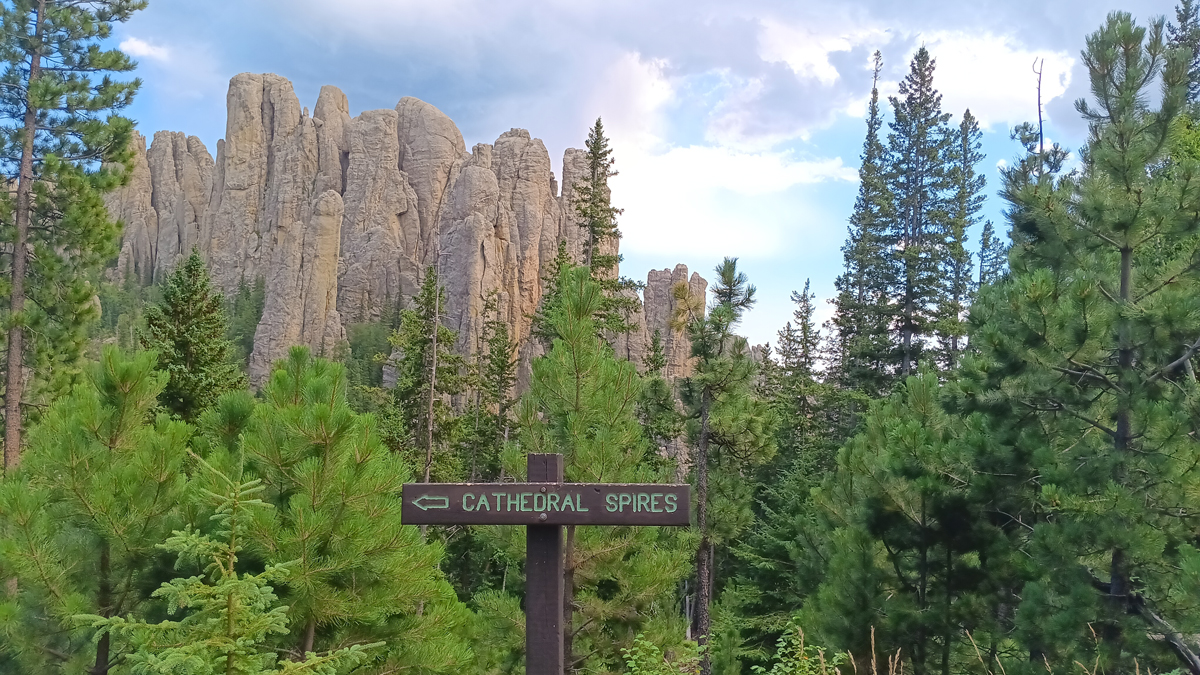
Let's hike extra!
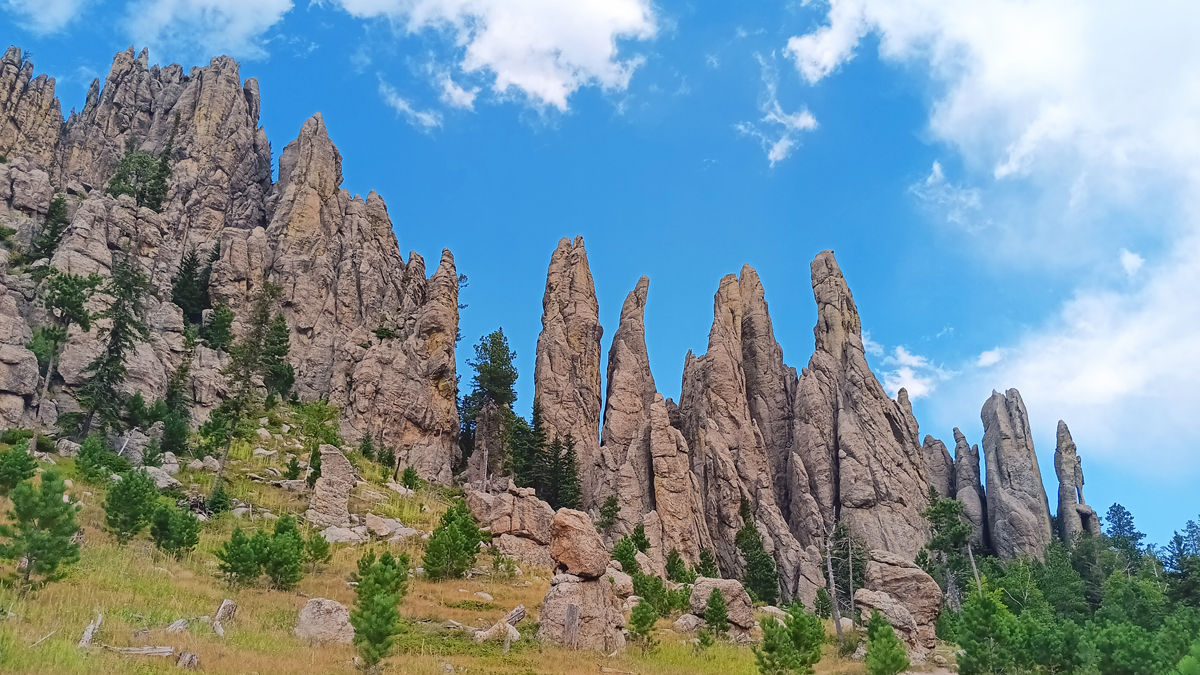
Cathedral Spires
Then we had the option of hiking a spur to Little Devil's Tower, short but steep, with a scramble up some rocks to the top. Tom took a pass on expending the additional energy, but I feared missing out, so off I went while Tom stayed behind. The climbing was non-technical, and the 360-degree view from the top was AMAZING! The spur added about three-quarters of a mile.
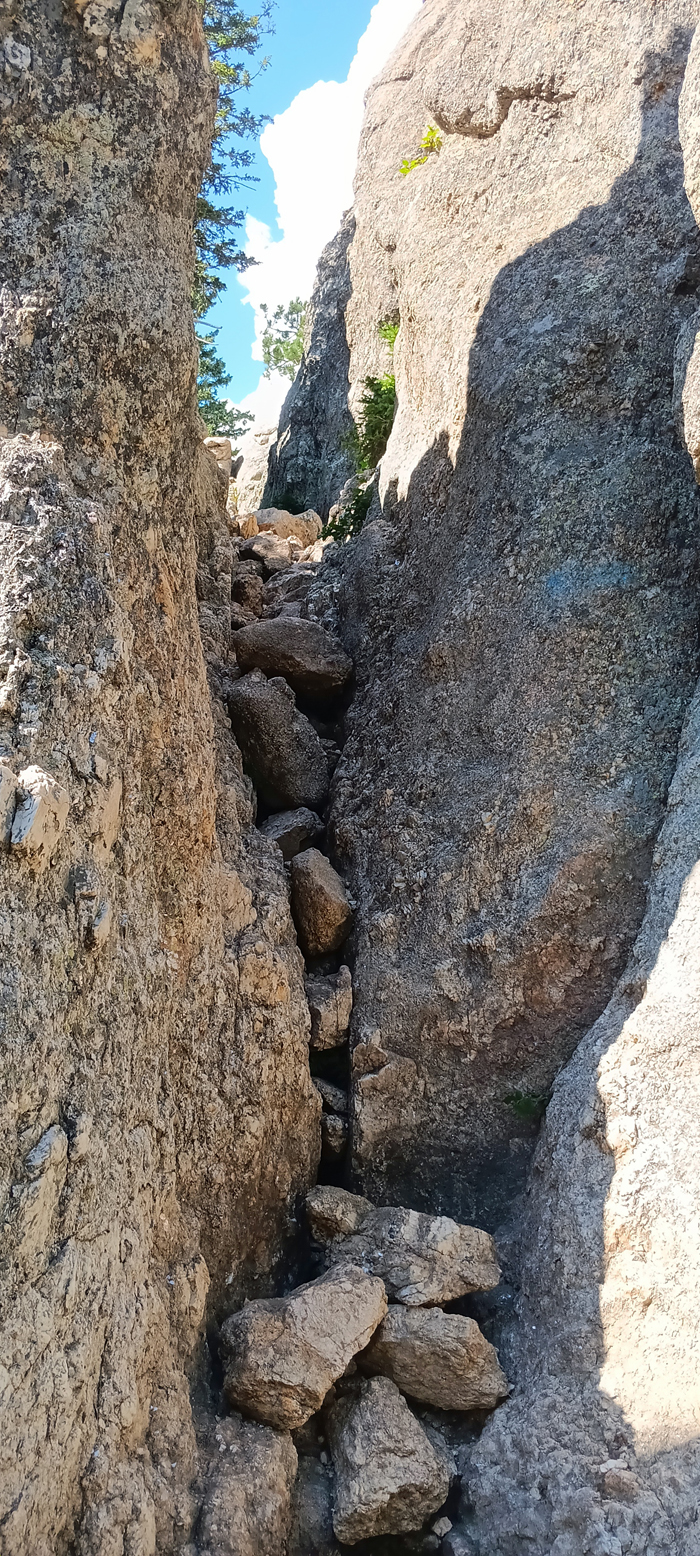
Climbing the Little Devil's Tower Trail
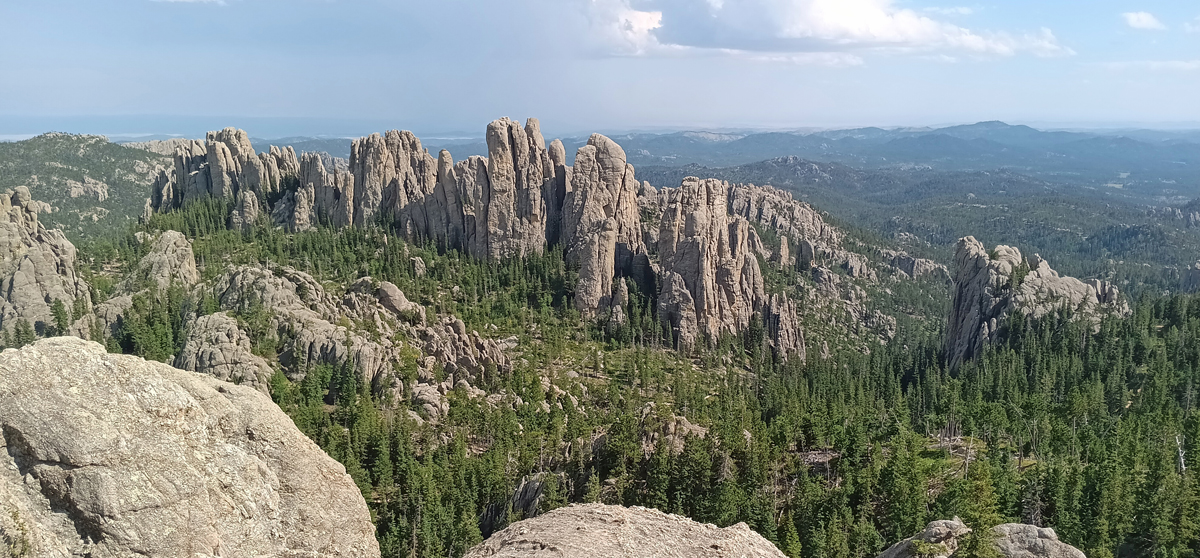
The Needles
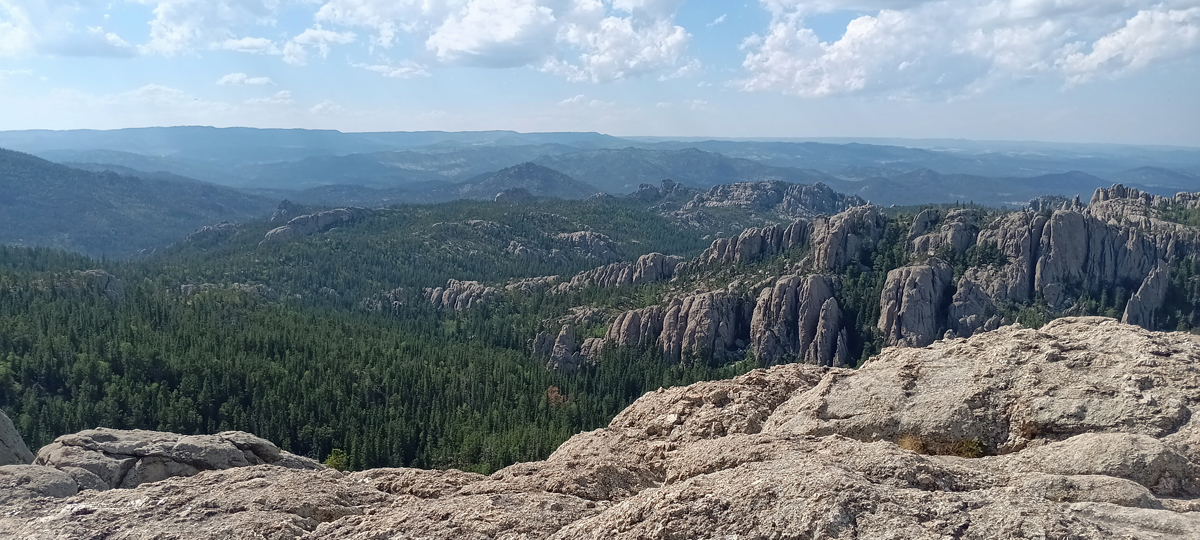
Black Hills
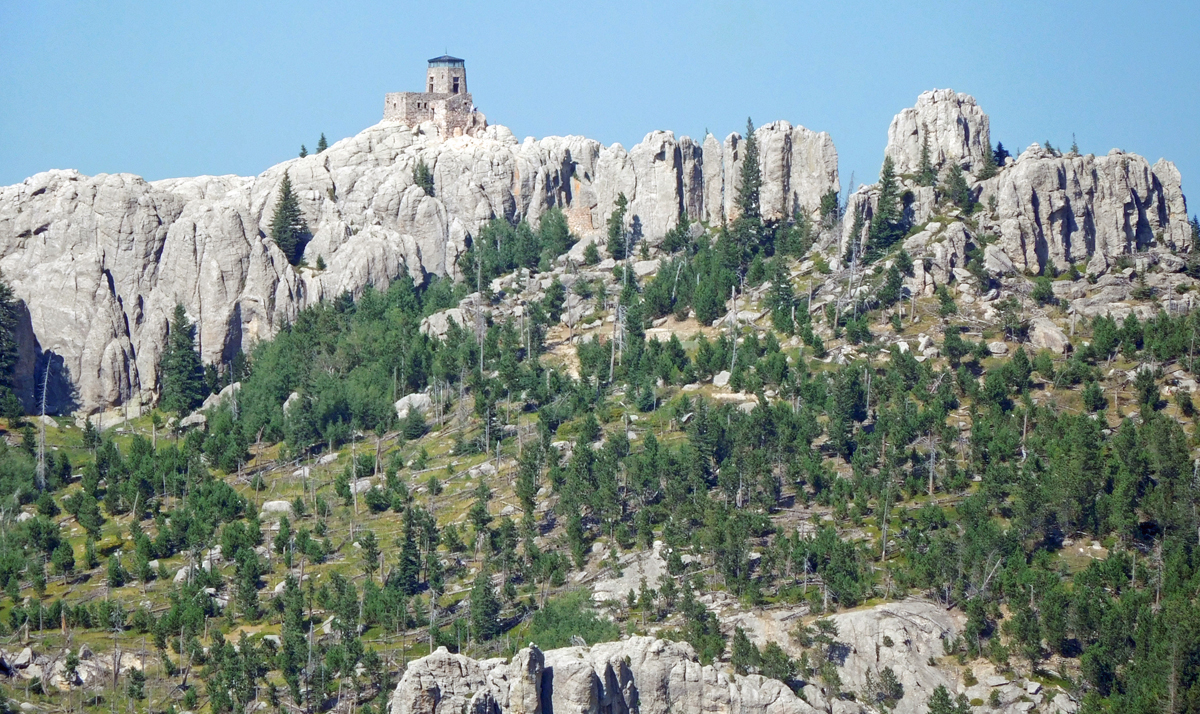
Black Elk Peak from Little Devil's Tower
Eventually, I met back up with Tom, and we finished the loop together. Our epic hike took from 9:00 to 5:00, with Tom hiking an outlandish 9.2 miles and Jana clocking in with a dead-on 10 miles. Not too shabby and worth every step! Before driving away, we strolled for a few minutes along the shore of Sylvan Lake.
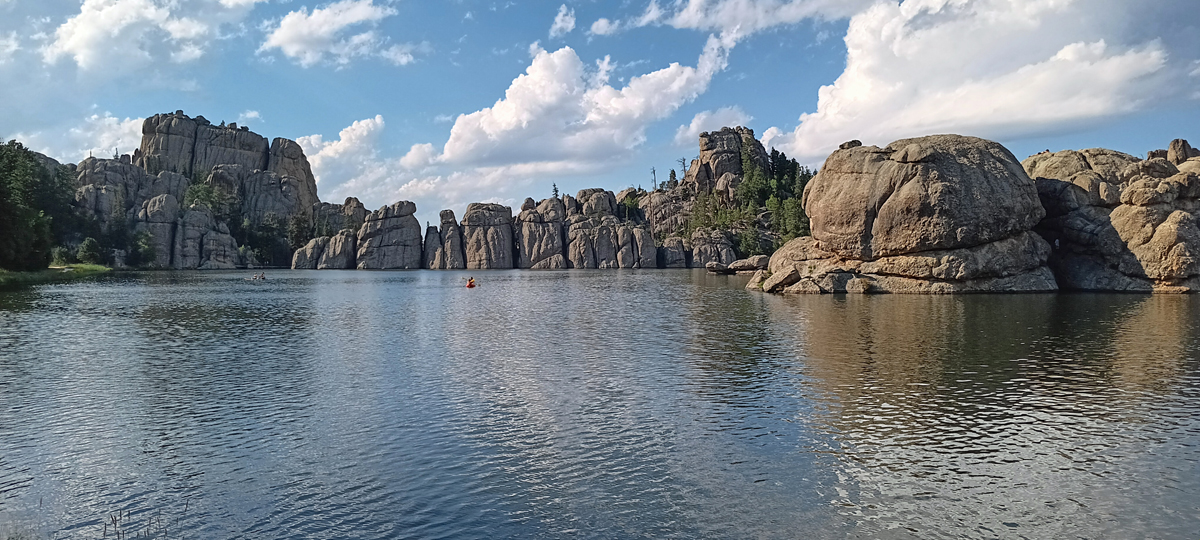
Sylvan Lake
Finally back in the car, we headed straight to the nearest brewpub, in the town of Custer. What could be more fitting around here than the Mt. Rushmore Brewing Company and their in-house Pounding Fathers Restaurant? The burgers were on the small side after the day's exertions, but the beer was quite welcome.
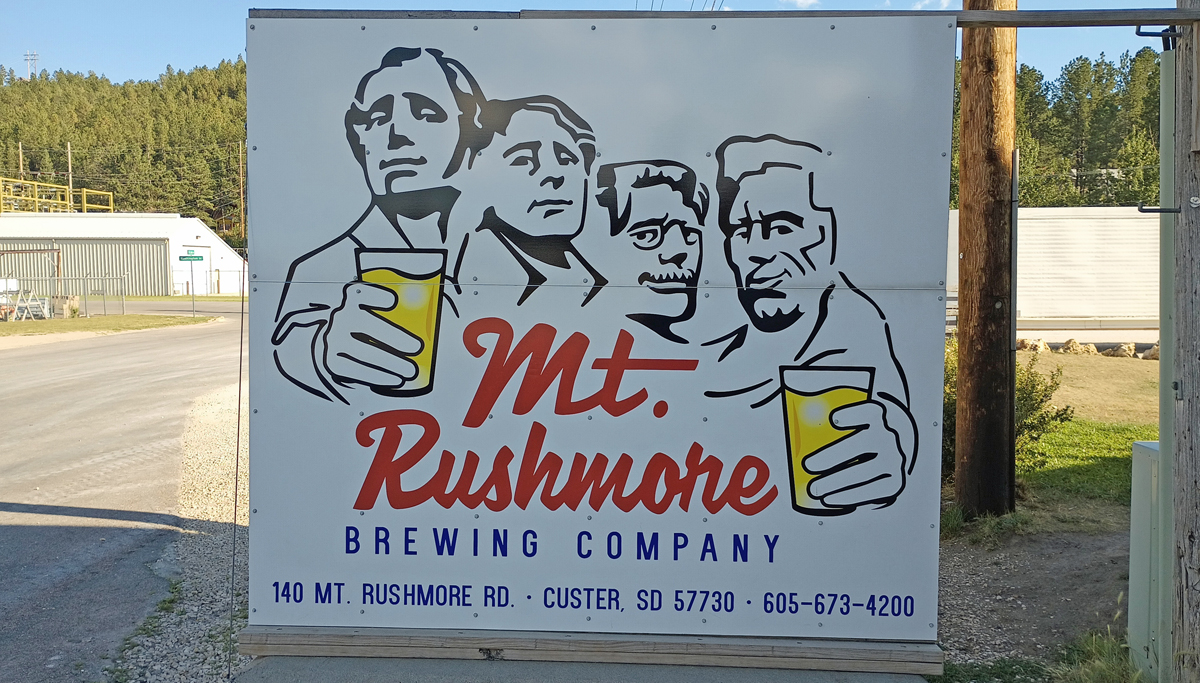
Rest and rehydration

Yes, please
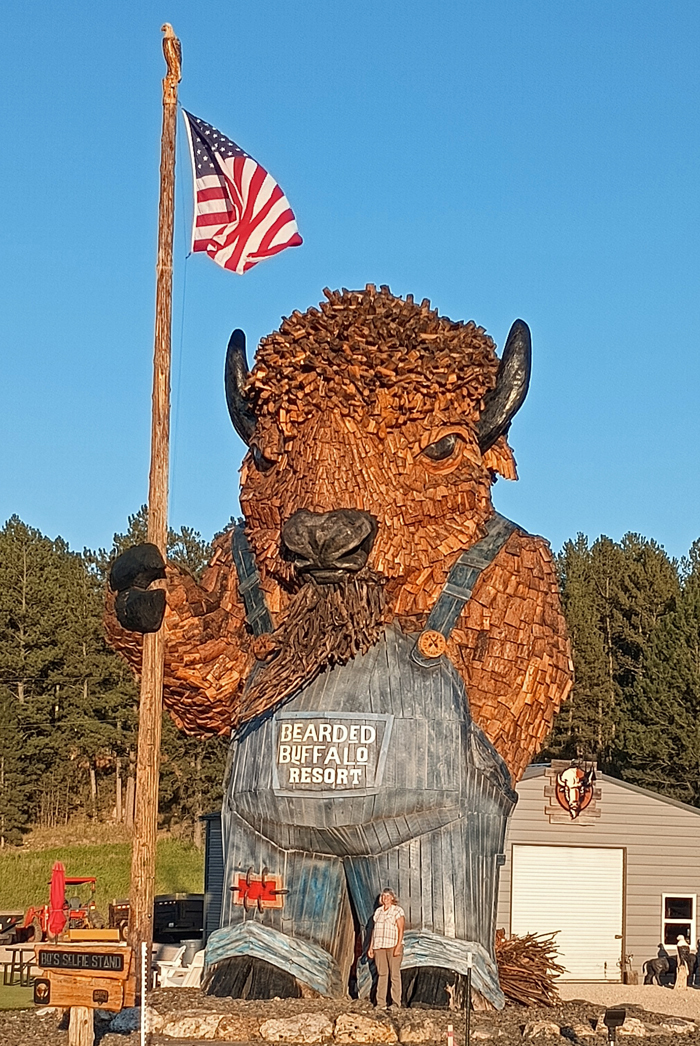
Giant roadside bearded buffalo
After dinner, we drove the 18-mile Wildlife Loop through the southern part of Custer State Park. Late evening and early mornings are the best time for wildlife viewing, and we saw a coyote, a few pronghorn, lots of deer, a herd of buffalo, and a couple of wild burros. It was getting too dark for photos, but we got one decent pic of a pronghorn.
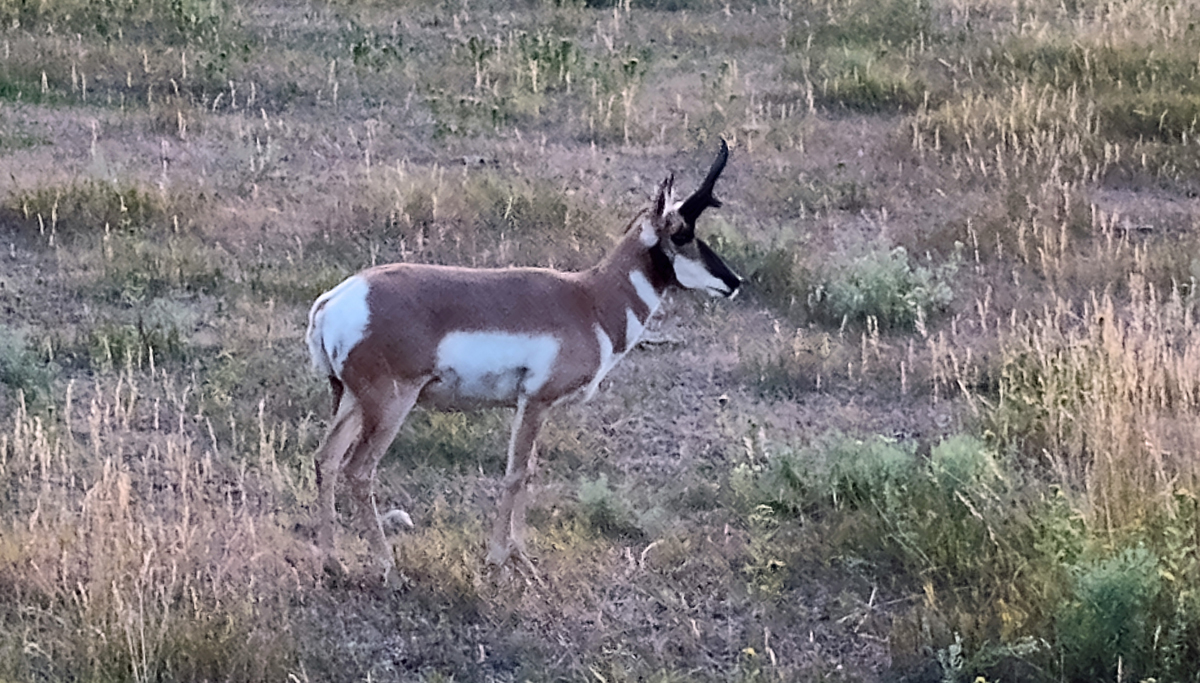
Pretty pronghorn